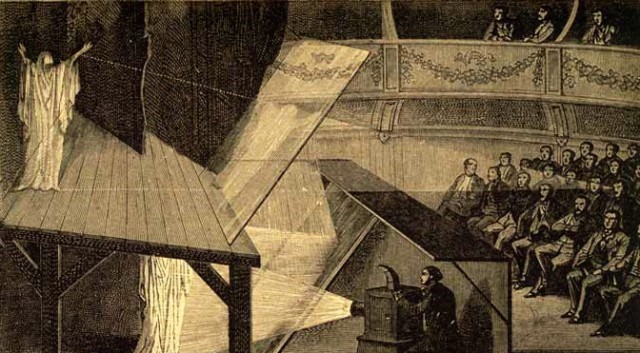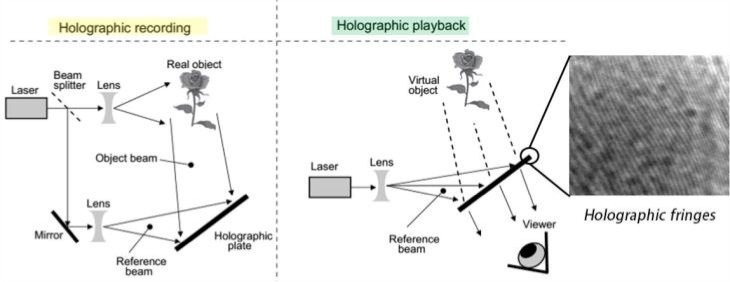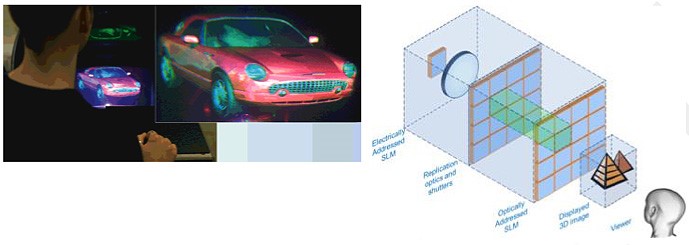
1. Holograms, as seen in sci-fi, do not yet exis t
Michael Jackson, Tupac, and all other deceased celebrities whose likeness was forcefully paraded s as “holograms” over the years, are not in fact holograms, but illusions based on a magic trick invented by 19th century English gentleman inventor John Henry Pepper. Pepper’s Ghost, as the trick is called, cunningly used a sheet of glass and lighting to project an actor onstage and create the illusion of a ghostly apparition standing on stage.
By placing a sheet of glass at an angle between the audience and an adjacently standing actor, then using the stage to reflect light from the actor while still enabling them to see through the stage ahead, produced an onstage illusion; literally, smoke and mirrors if you will. The “holograms” manifested in large events are a contemporary variation of this same trick.
2. Holograms, by definition, seek to capture and recreate all the light-field information
Using an image sensor, cameras capture photographs captured by storing a time-average amplitude of the light-field reflected from the subject and its surroundings. As such, the generated image contains only a portion of the entire information produced by the reflected light, whereas a hologram, as defined by its inventor the electrical engineer and physicist Dennis Gabor, recreates the “whole-drawing,” amplitude, phase, and wavelength information of the object. That is to say that by a true hologram reproduces all light-field information, preventing the viewer from discerning the different between the hologram and the original image.
3. The first hologram was created 70 years ago
Dennis Gabor produced a static hologram nearly 70 years ago by illuminating an object with a laser and interfering the scattered light with another laser to create encoded interference fringes, which, when illuminated with the same source, simultaneously scatters light from all fringes and interferes with itself to reconstruct the original object’s light field producing a static 3D image.
4. A million-trillion pixels are needed to create true 3D holographic displays
3D holograms are decades away from becoming incorporated in consumer electronics because modern hardware simply cannot imprint and process the vast amount of quantum data stored in photons, or particles of light, let alone recreate it at the 30 frames per second considered standard in American television displays. It’s believed that a million-trillion pixels are required to achieve a pure 3D holographic display.

Similarly, there remains an absence of any practical technology capable of recording the complex light-field information in real-time, transmitting such enormous amounts of data, and finally, processing it. As ExtremeTech’s Calum Williams points out: “Considering we are just about entering the 4K TV era (which is a screen made of approximately 10 million pixels), we are some way off.” Perhaps once quantum computing becomes standard.
5. The closest thing to a prototype holographic display was created 12 years ago
Nearly a decade ago, QinetiQ, the British multinational defense company, created a prototype holographic display based on spatial light modulation technology, a contemporary technology that modulates the amplitude, phase, or polarization of light waves in space and time, similar to how overhead projector transparency functions. Contemporary spatial light modulators are able to encode laser beams with information in much the same way that transparency does.
QinetiQ’s approach leveraged an active tiling system with two spatial light modulators to provide all the depth cues needed to recreate a 3D image; the approach was expensive, impractical, and lacked the full depth of information as the technology to recreate it doesn’t yet exist.

Source: ExtremeTech
Advertisement
Learn more about Electronic Products Magazine





